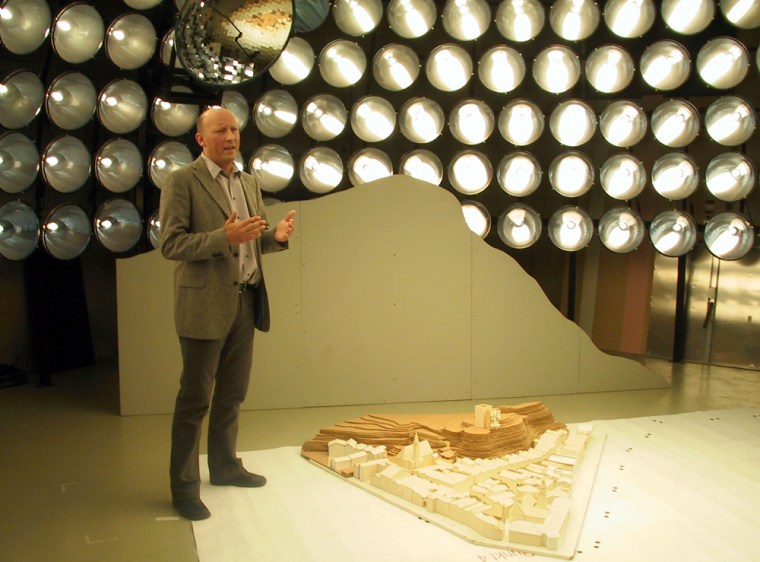The sun has stopped shining in Rattenberg. But with the aid of a few mirrors, the winter darkness that grips this small town could soon be brightened up with pockets of sunshine.
That's because sun is plentiful less than 10 minutes' walk from the town and from Rat Mountain, the 3,000-foot hill that blocks its sunlight between November and February each year.
The solution: 30 heliostats, essentially rotating mirrors, mounted on a hillside to grab sunshine off reflectors from the neighboring village of Kramsach.
Bartenbach Lichtlabor GmbH, the Austrian company behind the idea, has already used mirrors for lighting projects around the world -- sunshine into European basements and railroad stations or nighttime illumination of a mosque in Saudi Arabia and Malaysia.
It says the reflector technology is now advanced enough to justify the company's first attempt to bring sunshine into a village.
It's costly, however. The European Union is footing half the $2.4 million bill, and the company says it will pay the $600,000 cost of planning the project, gambling that success will attract more business.
"I am sure we will soon help other mountain villages see the light," says Markus Peskoller, Lichtlabor's director.

In the Tyrol region of the Alps alone, about 60 communities suffer the same fate in winter as Rattenberg. Peskoller says about six other towns in Austria and neighboring Switzerland have expressed interest.
The technology requires pinpoint beaming, and even the most modern mirrors have slight distortions and are vulnerable to strong winds.
Peskoller says those problems can be compensated for. But it would take a mirror the size of a football field to light up all of Rattenberg, "and we cannot cover the mountain with mirrors to bathe the whole town in light," he says.
So Lichtlabor plans to create about a dozen "hotspots" -- areas not much bigger than a front yard scattered through the town, where people can gather and soak up rays. The mirrors would also reflect at various times of day onto building facades to show daylight slowly turning to dusk.
Rattenberg was built between the hill to the south and the Inn River to the north starting in the 1300s for protection against marauders. Back then, lack of sunshine was a small price to pay for relative security.
But as such dangers diminished, dozens more settlements sprang up. Some, like Kramsach, are just half a mile away and all enjoy a few hours of sun on a clear winter's day.
Rattenberg's demographics reflect the pull of the sun. The town 25 miles east of Innsbruck is Austria's smallest and getting smaller. Its population has dropped by about 20 percent to 440 in the last two decades, and both Peskoller and Mayor Franz Wurzenrainer attribute that at least in part to lack of sunshine.
The mayor remembers how in the 1950s, when not everyone had a car, townspeople would trek over the bridge on the Inn River to Kramsach on a Sunday "to tank up on some sun."
In a poll of four years ago, about 50 percent of Rattenbergers listed lack of winter sunlight as their biggest disadvantage.
"We all complain, although those who have lived here into old age can put up with the problem," says Maria Auer, 91. "But the young folks are moving away."
Christine Margreiter runs a florist's shop in town but lives in a sunnier town nearby where she makes up for sunless weekdays by hiking and gardening.
"It's unpleasant to come here for me," she says. "Dark and cold."
